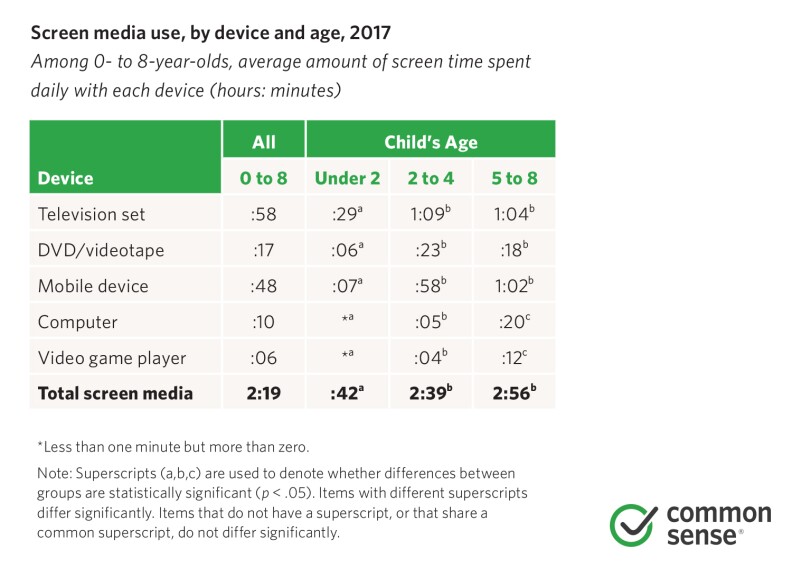This archival content was originally written for and published on KPCC.org. Keep in mind that links and images may no longer work — and references may be outdated.
Kids' mobile screen time rates have tripled in four years
Just six years ago, only 8 percent of families with young kids owned a smartphone. Now, that number is up to 95 percent.
As mobile devices have become ubiquitous in households, so has use among young children. A new study out Thursday from Common Sense Media, a nonprofit that studies the relationship families have with technology, shows that kids under eight are using mobile devices for three times as many minutes as they were in 2013 – 48 minutes, up from 15.
The Common Sense Census, which surveys 1,400 families around the country, has been tracking media use for kids 8 and under since 2011. This year, it found that they spend an average of 2 hours and 19 minutes with screens each day, roughly the same as in previous years. The difference now is what kids are doing.
"There's just been a huge shift toward streaming online video," said Caroline Knorr, senior parenting editor at Common Sense Media. "Those providers do have a lot of innovative and original content for kids, which is kind of cool. But we can't just sit our kids in front of the streaming online video and expect that they're getting something out of it."
The study found that only one in five parents said they were aware of the American Academy of Pediatrics recommendations around media use. The AAP recommends that children under 18 months old avoid screen media (except for video chatting) and that children aged two to five have no more than one hour per day with digital media.

"Kids who are still learning to walk and talk now have access to handheld devices on a daily basis," said Knorr. "And what we know from early childhood development is that the best thing for kids zero to 2 years old is to be interacting with a loving caregiver."
Overexposure to digital media – especially when kids consume it passively – raises concerns that kids won't be physically active and delay their development of healthy social and fine motor skills.
"There's a real balance that needs to happen and parents have to navigate that," said Ying-Ying Goh, a pediatrician and health officer with the City of Pasadena.
Screens are part of our lives and Goh understands the convenience digital devices present that allow parents to take breaks, but she said it's important to not let media become a replacement for talking, reading and interacting. She recommends parents seek out educational content and watch it with their kids and discuss the themes.
The American Academy of Pediatrics recommends parents create a Family Media Plan, to carve out rules for what works.
"There are so many potential harms to children with excessive screen time," Goh said. "It's really important for parents to intentionally make a plan for how they will teach their kids how to interact with media and protect their kids from potential harm."

Other study takeaways:
- Though a "digital divide" persists, there's a much smaller gap in computer and internet access between families with low and high incomes.
- Contrary to pediatrician recommendations, many children use media shortly before bedtime.
- While parents are concerned about what kids might find online (78 percent are "very/somewhat concerned" about violence; 77 percent about sexual content), 67 percent say it helps with learning.
- The amount of time children spend reading each day has held steady since 2011, but many children under 2 are not read to regularly by their parents.
Explore the full study from Common Sense Media here.



